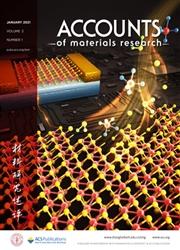All-Optical Microfluidic Technology Enabled by Photodeformable Linear Liquid Crystal Polymers
IF 14
Q1 CHEMISTRY, MULTIDISCIPLINARY
引用次数: 0
Abstract
The microfluidic biochemical/immunoassay systems typically consist of microfluidic chips, fluid driving devices, and detection components. The core of the system is the microfluidic chips based on microfluidic technology, which are typically constructed with nonresponsive materials such as silicon, glass, and rigid plastics, thus requiring complex external air/liquid pumps to manipulate the samples. The external equipment renders the microfluidic systems cumbersome and increases the risk of biosample contamination. The all-optical microfluidic chip (AOMC) integrates all necessary microfluidic units and uses light to manipulate microfluids, which has the potential to completely solve the major problems of miniaturization and integration in microfluidic systems. The photocontrolled manipulation in AOMCs facilitates contactless interaction with liquids, eliminating the need for physical interconnects such as complex external electric, hydraulic, or pneumatic devices and replacing the traditional microfluidic components such as pumps, mixers, and separators, which offers AOMCs improved flexibility, robustness, and portability. However, impeded by photocontrolled principles and appropriate materials, AOMCs and photocontrolled biochemical/immunoassay analyzers have never been created.

由光变形线性液晶聚合物实现的全光微流控技术
微流控生化/免疫分析系统通常由微流控芯片、流体驱动装置和检测组件组成。该系统的核心是基于微流控技术的微流控芯片,该芯片通常由硅、玻璃和硬质塑料等非响应材料构成,因此需要复杂的外部空气/液体泵来操纵样品。外部设备使微流体系统变得繁琐,并增加了生物样品污染的风险。全光微流控芯片(AOMC)集成了所有必要的微流控单元,利用光来操纵微流体,有可能彻底解决微流控系统小型化和集成化的主要问题。aomc中的光控操作促进了与液体的非接触式相互作用,消除了物理互连的需要,如复杂的外部电动,液压或气动装置,并取代了传统的微流体组件,如泵,混合器和分离器,这为aomc提供了更高的灵活性,稳健性和便携性。然而,由于光控原理和合适的材料的阻碍,aomc和光控生化/免疫分析分析仪从未被创造出来。
本文章由计算机程序翻译,如有差异,请以英文原文为准。
求助全文
约1分钟内获得全文
求助全文

 求助内容:
求助内容: 应助结果提醒方式:
应助结果提醒方式:


